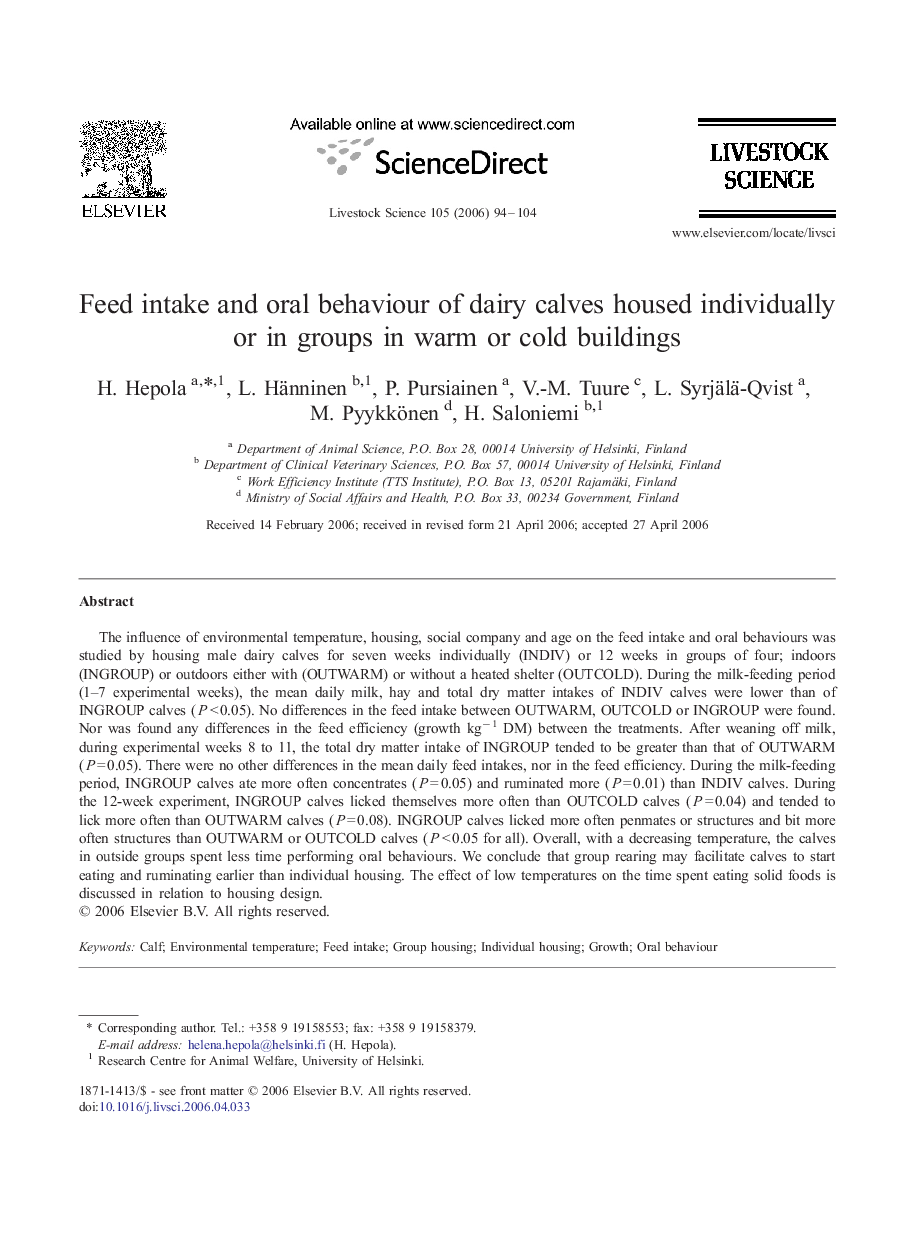| Article ID | Journal | Published Year | Pages | File Type |
|---|---|---|---|---|
| 2449105 | Livestock Science | 2006 | 11 Pages |
The influence of environmental temperature, housing, social company and age on the feed intake and oral behaviours was studied by housing male dairy calves for seven weeks individually (INDIV) or 12 weeks in groups of four; indoors (INGROUP) or outdoors either with (OUTWARM) or without a heated shelter (OUTCOLD). During the milk-feeding period (1–7 experimental weeks), the mean daily milk, hay and total dry matter intakes of INDIV calves were lower than of INGROUP calves (P < 0.05). No differences in the feed intake between OUTWARM, OUTCOLD or INGROUP were found. Nor was found any differences in the feed efficiency (growth kg− 1 DM) between the treatments. After weaning off milk, during experimental weeks 8 to 11, the total dry matter intake of INGROUP tended to be greater than that of OUTWARM (P = 0.05). There were no other differences in the mean daily feed intakes, nor in the feed efficiency. During the milk-feeding period, INGROUP calves ate more often concentrates (P = 0.05) and ruminated more (P = 0.01) than INDIV calves. During the 12-week experiment, INGROUP calves licked themselves more often than OUTCOLD calves (P = 0.04) and tended to lick more often than OUTWARM calves (P = 0.08). INGROUP calves licked more often penmates or structures and bit more often structures than OUTWARM or OUTCOLD calves (P < 0.05 for all). Overall, with a decreasing temperature, the calves in outside groups spent less time performing oral behaviours. We conclude that group rearing may facilitate calves to start eating and ruminating earlier than individual housing. The effect of low temperatures on the time spent eating solid foods is discussed in relation to housing design.
